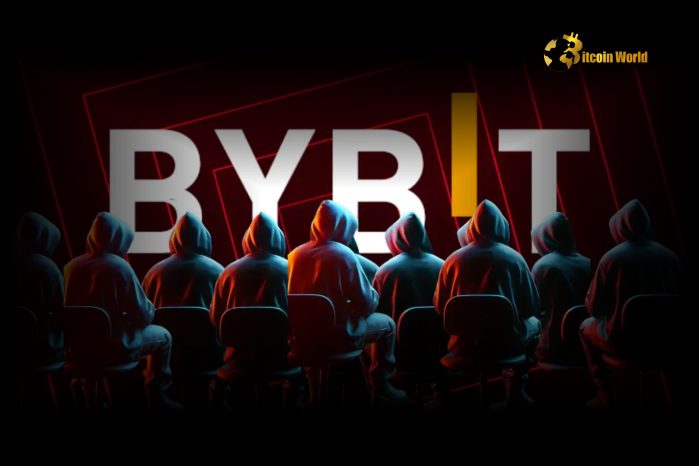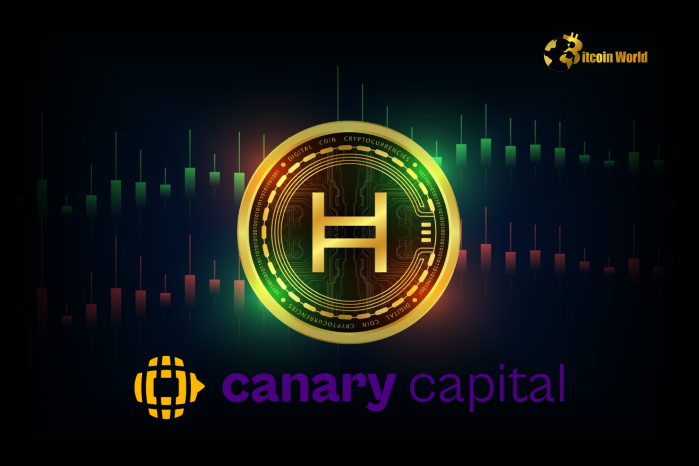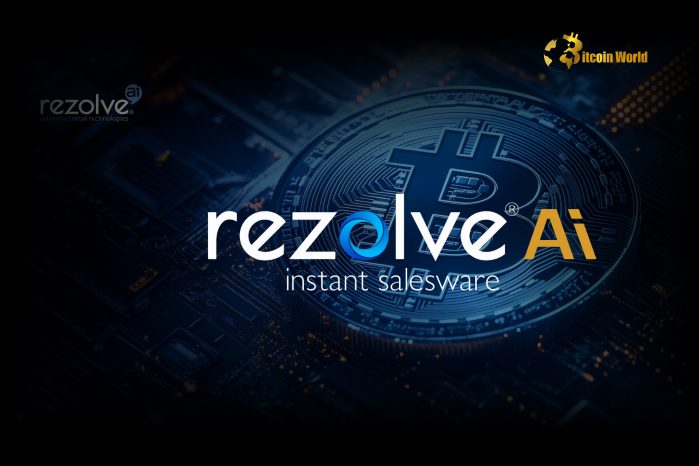
Hold onto your hats, crypto enthusiasts! In a whirlwind of events that proves the crypto space can be both wild and resilient, Bybit, a major crypto exchange, has demonstrated some serious agility. Just after facing a staggering $1.5 billion hack (yes, you read that right!), Bybit sprang into action. And guess what? They managed to freeze a significant chunk of the stolen crypto assets – a whopping $42.89 million – in under 24 hours! This isn’t just good news; it’s a testament to the collaborative spirit and improving crypto security measures within the digital asset world. Let’s dive into how this unfolded and what it means for you. Unpacking the Bybit Crypto Exchange Hack and the Immediate Response First things first, let’s address the elephant in the room – the crypto exchange hack itself. While details surrounding the $1.5 billion incident are still emerging, what’s crystal clear is Bybit’s rapid and decisive response. Within moments of detecting the breach, they activated their security protocols and, crucially, reached out to key players across the crypto ecosystem. This wasn’t a solo mission; it was a coordinated effort that highlights the interconnectedness of the crypto world when it comes to security. Imagine a scenario where a traditional bank robbery occurs. The bank alerts authorities, but the process of tracking and recovering assets can be lengthy and complex, often crossing international borders and legal jurisdictions. Now, picture that happening in the fast-paced, borderless world of crypto. The challenge is amplified, but so is the speed of response – when everyone is on the same page. How Was $42.89 Million in Stolen Crypto Assets Frozen So Quickly? This is where the real story unfolds. Bybit didn’t just wave a magic wand. They leveraged their network and partnerships, reaching out to a consortium of platforms known for their robust security and compliance measures. The key players who stepped up to the plate include: Tether: A major stablecoin issuer, crucial for freezing USDT, a widely used cryptocurrency. THORChain: A decentralized cross-chain liquidity protocol, highlighting the role of DeFi in security efforts. ChangeNOW & FixedFloat: Instant crypto exchange services, vital for intercepting and halting the movement of funds. Avalanche: A blockchain platform, demonstrating the collaboration across different blockchain ecosystems. CoinEx & Bitget: Other crypto exchanges, showcasing industry-wide cooperation. Circle: Issuer of USDC stablecoin, another key player in freezing stablecoin assets. Bybit publicly acknowledged these platforms on X (formerly Twitter), expressing their gratitude for the swift assistance. This public acknowledgment isn’t just good PR; it’s a powerful signal to the crypto community about the importance of collaboration and transparency in the face of security threats. The Significance of Frozen Crypto Funds: What Does It Mean for Users? The successful freezing of $42.89 million in frozen crypto funds carries several important implications: Demonstrates Enhanced Crypto Security: This event underscores the increasing sophistication and responsiveness of crypto security protocols within the industry. It’s not a perfect system, but it’s evolving rapidly. Reduces Impact of Hacks: While a $1.5 billion hack is undeniably massive, recovering even a portion of the stolen crypto assets is a significant win. It lessens the financial blow and potentially deters future attackers. Boosts User Confidence: Knowing that exchanges and platforms are actively collaborating to recover stolen funds can significantly boost user confidence in the crypto space. It shows that efforts are being made to protect users’ assets. Sets a Precedent for Collaboration: This incident sets a positive precedent for future collaborations in addressing crypto exchange hack attempts. It highlights the effectiveness of a united front against cybercriminals. Challenges and the Road Ahead for Crypto Security While this recovery is commendable, it’s crucial to acknowledge that challenges remain. The fact that a $1.5 billion hack occurred in the first place is a stark reminder of the ongoing risks in the crypto world. Key challenges include: Evolving Hacker Tactics: Cybercriminals are constantly developing more sophisticated methods to breach security systems. The industry must stay one step ahead. Decentralization and Anonymity: While these are core tenets of crypto, they can also complicate asset recovery. Tracking and freezing funds across decentralized networks can be technically challenging. Regulatory Landscape: The evolving regulatory landscape for cryptocurrencies adds another layer of complexity. Clearer global regulations could potentially facilitate faster and more effective asset recovery in the future. Actionable Insights: What Can Crypto Users Learn from This? This incident, despite being a security breach, offers valuable lessons for crypto users: Choose Reputable Exchanges: Opt for exchanges like Bybit that demonstrate a commitment to security and transparency. Research their security protocols and track record. Diversify Your Holdings: Don’t keep all your crypto eggs in one basket. Diversify across different exchanges and wallets to mitigate risk. Utilize Hardware Wallets: For long-term storage of significant crypto holdings, consider using hardware wallets for enhanced security. Stay Informed: Keep abreast of the latest crypto security news and best practices. Knowledge is your best defense in the crypto world. Be Vigilant: Be cautious of phishing attempts and other social engineering tactics that hackers use to steal credentials. Conclusion: A Glimmer of Hope in the Face of Crypto Adversity The swift action taken by Bybit and its collaborators to freeze a substantial portion of stolen crypto assets is undoubtedly a positive development. It’s a powerful demonstration of the crypto community’s ability to respond to threats and protect user assets. While the fight against cybercrime in the crypto space is far from over, this incident provides a glimmer of hope and reinforces the importance of ongoing vigilance, collaboration, and innovation in crypto security . The rapid freezing of funds serves as a powerful deterrent and a beacon of progress in making the crypto world a safer place for everyone. To learn more about the latest crypto security trends, explore our article on key developments shaping crypto security measures.
Bitcoin World
You can visit the page to read the article.
Source: Bitcoin World
Disclaimer: The opinion expressed here is not investment advice – it is provided for informational purposes only. It does not necessarily reflect the opinion of BitMaden. Every investment and all trading involves risk, so you should always perform your own research prior to making decisions. We do not recommend investing money you cannot afford to lose.
Exciting Breakthrough: Canary Funds Files for Spot HBAR ETF in Pursuit of SEC Approval

Get ready for a potential game-changer in the crypto ETF space! The buzz is building as Canary Funds takes a significant step forward by submitting a 19b-4 filing for a spot Hedera (HBAR) ETF. This exciting development, reported by Bloomberg ETF analyst Eric Balchunas, signals a growing momentum for alternative cryptocurrency investment products in the US market. Following a revised S-1 registration statement with the U.S. Securities and Exchange Commission (SEC), the Canary HBAR ETF is now in the regulatory spotlight, potentially paving the way for wider adoption of Hedera and the HBAR token. What Does Canary Funds’ Spot HBAR ETF Filing Mean for the Crypto Market? This move by Canary Funds is more than just another filing; it represents a crucial push towards diversifying the crypto ETF landscape beyond Bitcoin and Ethereum. For investors eager to explore the potential of altcoins within a regulated and accessible framework, the prospect of a spot HBAR ETF is incredibly appealing. Let’s break down why this filing is significant: Expanding Crypto ETF Horizons: Currently, the US market primarily offers ETFs focused on Bitcoin and Ethereum futures, and recently approved spot Bitcoin ETFs. A spot Hedera ETF would open doors to investment in a wider range of digital assets, offering diversification opportunities and exposure to different blockchain technologies. Confidence in Hedera and HBAR: Canary Funds’ decision to file for a spot HBAR ETF indicates a strong belief in the long-term potential of Hedera and its native cryptocurrency, HBAR. This endorsement from a financial institution can boost investor confidence and attract further attention to the Hedera ecosystem. Increased Accessibility for Investors: ETFs provide a regulated and familiar investment vehicle for both institutional and retail investors. A spot HBAR ETF would make investing in HBAR significantly easier, removing the complexities associated with direct cryptocurrency ownership, custody, and exchange navigation. Potential Market Impact: If approved, the Canary Hedera ETF , trading on Nasdaq, could drive substantial capital inflow into HBAR, potentially impacting its price and overall market capitalization. It could also set a precedent for other altcoin ETFs, further legitimizing the crypto asset class. Why is SEC Approval for a Spot HBAR ETF a Big Deal? Securing SEC approval for any spot crypto ETF has historically been a challenging process. The SEC has been cautious, primarily citing concerns around market manipulation and investor protection. However, the recent approval of spot Bitcoin ETFs signals a potential shift in the regulatory landscape. Why is SEC approval so vital for the Canary HBAR ETF and the broader crypto market? Regulatory Legitimacy: SEC approval provides a stamp of regulatory legitimacy, assuring investors that the ETF meets stringent regulatory standards. This can significantly reduce perceived risk and encourage wider adoption. Investor Protection: The SEC’s regulatory framework is designed to protect investors. An approved spot HBAR ETF would operate under these regulations, offering investors a level of security and transparency not always available in the unregulated crypto market. Institutional Investment: Many institutional investors are restricted from investing directly in cryptocurrencies due to regulatory uncertainties. SEC-approved ETFs provide a compliant and convenient way for institutions to gain exposure to the crypto market, potentially unlocking massive capital inflows. Market Maturity: The approval of spot crypto ETFs, including a potential spot HBAR ETF , signifies a maturing crypto market. It indicates that regulatory bodies are becoming more comfortable with digital assets and are developing frameworks to integrate them into the traditional financial system. Hedera (HBAR) ETF: Leading the Altcoin ETF Race? According to Eric Balchunas, the Canary Funds HBAR ETF and a Litecoin (LTC) ETF are currently leading the pack among altcoin ETF filings in terms of approval odds. This is exciting news for the Hedera community and suggests that HBAR is being recognized as a strong contender in the altcoin space. But what factors contribute to this perceived higher probability of approval? Factor Relevance to HBAR ETF Market Cap and Liquidity HBAR boasts a significant market capitalization and increasing liquidity, making it a more viable candidate for an ETF compared to smaller, less liquid altcoins. Technology and Use Cases Hedera’s unique Hashgraph consensus mechanism and growing adoption across various industries showcase its technological robustness and real-world utility, potentially appealing to regulators. Filing Completeness Canary Funds’ submission of both 19b-4 and revised S-1 filings indicates a comprehensive and proactive approach to meeting regulatory requirements, increasing the chances of a favorable review by the SEC . Market Sentiment Shift Following the spot Bitcoin ETF approvals, there’s a palpable shift in market sentiment and potentially within the SEC, suggesting a greater openness to considering other crypto ETFs. Spot HBAR ETF: What’s Next and What to Expect? While the filing is a major step, the journey to SEC approval is not guaranteed and can take time. Here’s what to watch out for and what to expect in the coming weeks and months: SEC Review Process: The SEC will now begin its review of the 19b-4 filing. This process involves evaluating various aspects of the proposed ETF, including market surveillance, custody arrangements, and potential risks. Public Comment Period: The SEC typically opens a public comment period, allowing industry participants and the public to express their views on the proposed ETF. This feedback can influence the SEC’s decision. Potential Delays and Rejections: It’s important to remember that SEC approval is not guaranteed. The SEC may request further information, delay the decision, or ultimately reject the filing. However, the current climate seems more favorable than in previous years. Nasdaq Listing: If the HBAR ETF receives SEC approval , it is expected to be listed and traded on Nasdaq, providing investors with easy access through traditional brokerage accounts. Conclusion: A Promising Horizon for Hedera and Crypto ETFs Canary Funds’ filing for a spot HBAR ETF marks an exciting and potentially pivotal moment for both Hedera and the broader cryptocurrency ETF market. While SEC approval remains the key hurdle, the progress made so far, coupled with the evolving regulatory landscape, offers a strong sense of optimism. If successful, this could not only provide investors with a new avenue to access HBAR but also pave the way for a more diverse and mature crypto investment ecosystem. Keep a close watch on this developing story – the potential implications are significant! To learn more about the latest crypto market trends, explore our article on key developments shaping Bitcoin price action. Bitcoin World

XRP Sees $819,000,000 in Institutional Flows Since November As Hopes of SEC Dropping Lawsuit Grow: CoinShares
Crypto asset management firm CoinShares says institutional whales pulled hundreds of millions of dollars out of crypto investment vehicles last week. According to CoinShares’ latest Digital Asset Fund Flows Weekly Report, last month’s US presidential inauguration had a negative impact on investor sentiment last week. “Digital asset investment products saw outflows totaling US$508m last week, bringing the last two weeks of outflows to US$924m, following an 18-week run totaling US$29bn. We believe investors are exercising caution following the US Presidential inauguration and the consequent uncertainty around trade tariffs, inflation and monetary policy. This is also evident in trading turnover, which has fallen considerably from US$22bn 2 weeks ago to US$13bn last week.” Source: CoinShares According to CoinShares, XRP products saw the most significant inflows of any crypto product, including Bitcoin ( BTC ), which usually takes the lion’s share of inflows. While BTC products suffered $571 million in outflows, XRP products raked in $38.3 million in inflows. “XRP has now seen US$819m of inflows since mid-November 2025, reflecting investor hopes that the SEC will drop its lawsuit. Solana, Ethereum and Sui followed with inflows of US$8.9m, US$3.7m and US$1.47m, respectively.” Regionally, the US led all regions in outflows at $560 million. Germany and Switzerland led all regions in inflows with $30.5 million and $15.8 million in inflows. Don`t Miss a Beat – Subscribe to get email alerts delivered directly to your inbox Check Price Action Follow us on X , Facebook and Telegram Surf The Daily Hodl Mix Disclaimer: Opinions expressed at The Daily Hodl are not investment advice. Investors should do their due diligence before making any high-risk investments in Bitcoin, cryptocurrency or digital assets. Please be advised that your transfers and trades are at your own risk, and any losses you may incur are your responsibility. The Daily Hodl does not recommend the buying or selling of any cryptocurrencies or digital assets, nor is The Daily Hodl an investment advisor. Please note that The Daily Hodl participates in affiliate marketing. Featured Image: Shutterstock/Zaleman/INelson The post XRP Sees $819,000,000 in Institutional Flows Since November As Hopes of SEC Dropping Lawsuit Grow: CoinShares appeared first on The Daily Hodl . Bitcoin World











